The Most Dangerous Ant in the World
What is the most dangerous ant in the world? If you're in a hospital, it's the ant that's feeding on your wound. Or the one that has invaded the sterile packing for your bandages--after walking across feces in your neighbor's room. It may be the ant that has been drawn to the electrical wiring in your wall, and causes a fire. If these sound like fantastic, improbable scenarios, get ready for a dose of reality. Deadly ant infestations in hospitals are well documented, and global. There is no area of the world where a hospital is immune to an ant infiltration. And, with the ant swarm comes a host of pathogens that can, and do make people ill--sometimes with deadly consequences.
For the past several weeks I've been reading about the kinds of ants that have invaded hospitals around the world. I've catalogued some pathogens these ants have been shown to carry.
Ants are acknowledged mechanical vectors (carry pathogens from place to place, person to person) of disease, much in the way flies and cockroaches are. Each one of these insects may walk through, or land on, a contaminated area. Pathogenic material sticks to them. They move to another area and deposit microbial debris. Meanwhile, the ants (flies, cockroaches) are unaffected by the pathogens they carry.
Municipal Hospital in Teixeira de Freitas, Brazil
This is the municipal hospital in Brazil where a study of ants as vectors of disease was conducted. The picture is attributed to edson765 on Wikimedia Commons and is used under a Creative Commons Attribution 3.0 Unported license.
Brazil
The most comprehensive and frequently cited studies on ant infestations in hospitals (and their role as vectors of disease) have been conducted in Brazil. Small and large hospitals were sampled in these studies. One conclusion remained constant throughout the research: ants are a factor in the spread of hospital acquired disease (HAI). An HAI is defined as a disease that is contracted as a result of being in the hospital. Symptoms may not manifest until after discharge, but if the disease is caught while a patient is in the hospital, it's an HAI.
In 2013, the Universidade Federal de Pelotas (Brazil) issued a report, "Ants Associated with Pathogenic Microorganisms in Brazilian Hospitals: Attention to a Silent Vector". The report reviewed literature from thirteen studies dating back into the 90s. The University's findings were a wake-up call to the healthcare establishment in Brazil: The issue of ants as a vector of disease in Brazilian hospitals needed more focused attention.
That focus was clearly present in 2017, when a study was undertaken at the Municipal Hospital in Teixeira de Freitas, Brazil. The article that grew out of that effort, Ants as Vectors of Bacteria in Hospital Environments, became a reference for researchers across the world.
The article began with a consideration of HAIs. A startling revelation was that, depending on where you are treated in Brazil, your chances of getting sick from just being in the hospital ranged from depressing to terrifying. Stated numerically, hospitals with the lowest rate of HAIs reported that 9.0% of their patients caught a disease while in the hospital. On the other end of the spectrum, some hospitals reported an HAI rate of 88.23%.
Understandably, hospital administrators are interested in discovering ways to cut down on these rates. It turns out that not only are scrupulous hand-washing and sterilizing equipment part of the solution: Getting rid of ants is another, often underestimated, part.
The study at the municipal hospital began with collecting ant specimens. Baited traps were placed in different areas of the hospital. Once the ants were captured, ant species were identified and material from their bodies was cultured. Many dangerous pathogens were isolated. Some of these were drug resistant.
The ants favored ICU and pediatric units. They also congregated, predictably, around food facilities.
This device is typical of commercial ant bait traps. Depending on the locale, these may or may not be appropriate. Different species are attracted to different types of food. Leaf-cutters, for example, are not attracted to sugary baits.
Although it is true that ants thrive in warmer climates, they also do fine as they migrate north. Many of the species identified in the Brazil studies are now nuisances across the globe.
In the research conducted at the municipal hospital in 2017, four species were identified at different places in the hospital: Pheidole, Crematogaster, Tapinoma melanocephalum, and Linepithema humile.
Four Ant Species Collected at the Municipal Hospital in Teixeira de Freitas
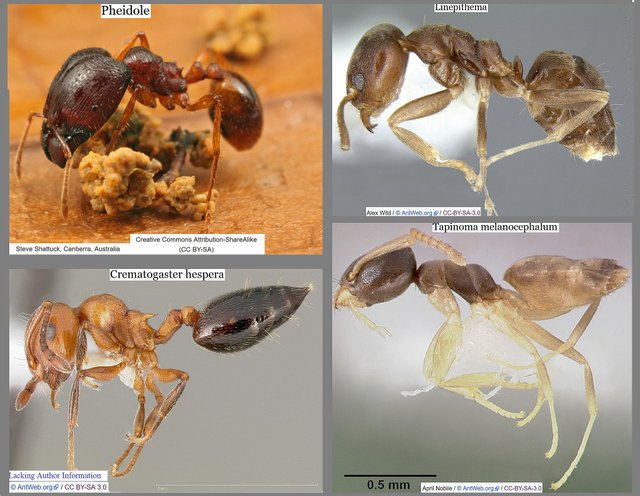
Pictures of the four ant species can be deceptive. Because of their highly social organization, the morphology of ants may vary within a species to adapt to colony function. It's not only the queen in which shape and size change, but also other "casts"--workers and soldiers--for example. The pictures here represent one specimen from each species. Other specimens from the same species might look entirely different. To get an idea of how great those differences can be, check out the pictures in this article from the University of Florida on Pheidole megacephala
If you want to see larger pictures of the four ants in the picture above, check out the links here: Crematogaster; Pheidole; Tapinoma; Linepithema
By far, the most common species trapped at the Municipal Hospital was Pheidole--more than 58% of the total collected. Pheidole is a diverse species that has wide global distribution. In other parts of the world, other ant species were shown to predominate in studies on hospital infestation. Pathogens identified in these other studies also varied somewhat.
An Ant "Milking" an Aphid"
Some ants, Linepithema humile--Argentine ants--among them, keep aphid "farms". As you can see in the picture, the ants stroke the aphids. The aphids are stimulated to produce honey, which the ants eat. In the case of the Argentine ant, its fondness for sweets is well known. Consequently, traps for this ant are baited with sugary material. (Species in the picture is not identified.) Photo credit: Jmalik (talk) on English Wikipedia, used under a CC Attribution-Share Alike 3.0 Unported license.
Pathogens Found on Ants at the Municipal Hospital of Teixeira de Freitas
Sixteen Staphylococcus strains, some of them multiple-drug resistant. Significantly, ants carrying drug resistant strains of Staphylococcus were found in the ICU unit, where the sickest and most vulnerable patients are treated. One strain isolated was S. epidermis. This strain is implicated in the development of (hospital acquired) bacteremia, urinary tract infections and post-operative infections. This strain of Staphylococcus is known to form biofilms on sterile instruments. Thus, ants don't have to make direct contact with patients to spread disease. A contaminated instrument will do that.
Twenty-one Enterobacter strains. Among these were drug-resistant strains of E.coli (in the ICU), C. freundii (in the ICU and orthopaedics ward), and K. oxytoca (in the semi-intensive care unit).
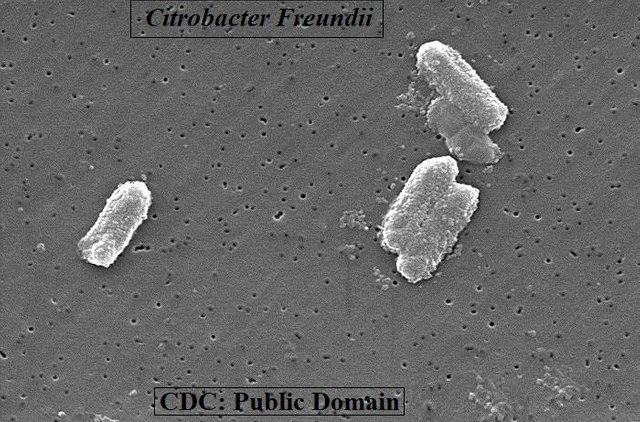
According to a 2018 report published in the Journal of Microbiology, Immunology and Infection, a C. freundii outbreak can have a mortality rate in a hospital of between 6.8% and 56%, depending on what sort of infection develops. Bacteremia takes the highest toll. C. freundii is gram-negative and may be part of normal gut flora. However, it can be quite nasty as an opportunistic infection. One condition it causes, neonatal meningitis, has a mortality rate of between 25% and 50%, and a 75% risk of neurological damage for survivors.
1972 The Irish Republic
The Pharaoh Ant
Unlike some ant species, the Pharaoh ant is monomorphic. This ant is more commonly known as the sugar ant. This species has a global presence, but doesn't like cold weather so in winter may be found indoors, in heated structures.
The earliest study I came across that addressed ants as vectors of disease in hospitals, Pharaoh's Ants as Pathogen Vectors in Hospitals, was published in 1972 ( in Lancet). The author, S. H. Beatson, reported on a nine-hospital survey he conducted over a period of nine months. The Beatson article is often cited in literature that addresses ants as vectors of disease in hospitals.
Beatson trapped ants in the various hospitals and cultured material from their bodies. The only ant specimen he identified in this study was the Pharaoh ant (Monomorium pharaonis). In order to capture the ants he laid traps in "wards, casualty departments, intensive-care units, kitchens and toilets". 1
Some startling statements are contained in Beatson's report. In one instance he describes a patient with a suppurating wound--an ant was seen feeding off the discharge. Another ant intrusion was witnessed in the ICU, where the insects were entering tubing of patients on ventilators.
Cultures of material taken from trapped ants revealed the presence of a number of pathogens. An interesting contrast to the later Brazilian study was that there was no mention of drug resistant pathogens.
Here's a chart that might help to explain why drug resistant bacteria were isolated in 2017 and not in 1972.
Pathogens Isolated In Beatson's Study
Clostridium, Clostridium perfringens, Escherichia coli, Pseudomonas, Pseudomonas aeruginosa, Salmonella, Salmonella dublin, Serratia, Serratia marcescens, Staphylococcus, Staphylococcus aureus, Streptococcus, Streptococcus pyogenes .
What's in Your Corner of the World?
In trying to get a handle on the dimension of the problem ants pose as vectors of disease, I took a look around the world. It's not easy to find reports on this subject, but what I did find was telling. One thing to keep in mind is that my research, in a way, followed the journey ants traveled as different species spread across the globe.
James Wetterer, of Florida State University, traces, for example, the global distribution of the Pharaoh ant. He describes this ant as the "most ubiquitous house ant in the world." (This was in 2010) He also credits it with being a hospital pest and vector of disease. Wetterer suggests that this ant originated not in Egypt, as its name suggests, but somewhere in Asia.
An interesting theory I came across was that insects that favor warm climates are moving further north all the time because of global warming.
A Brief Look at Argentina
Nylanderia fulva
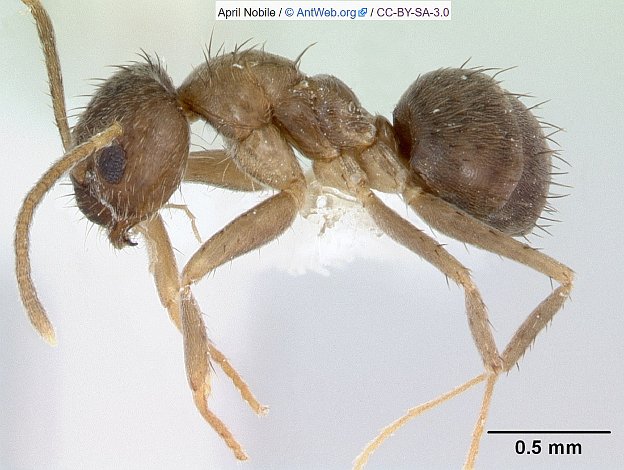
In this study, carried out at the Hospital de Niňos Ricardo Gutiérrez (pediatric hospital) in Buenos Aires, Argentina, the most troublesome indoor ant was Nylanderia fulva, also known as crazy ant--crazy because of the way it seems to run around in all directions. This pediatric hospital was located in a very old building, constructed in 1896. The age of the structure contributed to a persistent ant problem--cracks and openings from the outside that developed over time facilitated entry of the insects. There was a high degree of ant infestation in several areas of the building. Some of these areas were: trash cans, drains and patients' beds.
Pheidole was the second most dominant species identified. However, when a competition for food arose, Pheidole would back off and Nylanderia would prevail.
The thrust of the survey at the pediatric hospital was not to assess the potential for ants to carry pathogens, but rather to figure out how to get rid of them. Because it was a pediatric hospital, great care had to be taken to protect the children from accidental exposure to insecticides.
The researchers came to the conclusion that complete and lasting eradication was not possible, but that limiting infestation was possible. One practical suggestion for limiting re-infestation was to remove the green areas that surrounded the hospital. These areas gave ants easy access to the building (note the picture of the hospital here). Also, it was noted, visitors contributed to the problem of re-infestation by carrying material (perhaps plants) that might harbor insects.
Nylanderia Fulva--Tawny Crazy Ant, Queen and Worker
As you can see from the picture this species of ant is polymorphic: the shape and size of the ants' bodies change according to their function in the colony
Iran
A 2017 study, Synanthropic Ants as Vectors of Pathogens in Hospitals of Iran, was published in the Journal of Kerman University Medical Sciences. The authors of this study assert that they have proven, for the first time, that ants can be vectors of pathogens in the palearctic ecozone. This zone is one of eight eco-regions into which some conservationists divide the world.
The Iranian researchers demonstrate in their survey of three hospitals that ants are indeed vectors of disease in Iran. The two most prevalent ant species identified in their survey were Paratrechina (Nylanderia) longicornis and Camponotus. Twelve pathogens were cultured from these ants.
Map of the Palearctic Ecozone
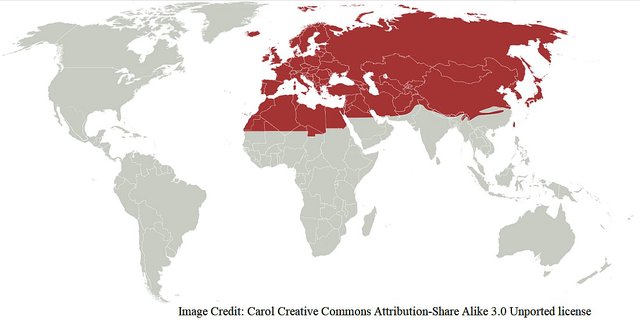
United States
Fire Ant Solenopsis Invicta
This is a public domain picture, taken by Alejandro Santillana as part of The Insect Unlocked Project at the University of Texas, Austin.
So far we've looked at ants in healthcare institutions as mechanical vectors of disease. The fire ant, Solenopsis invicta, offers an added challenge. This ant has proven to be extremely successful at not only establishing itself in US southern states, but also in other countries of the world. A particular challenge fire ants pose is that when they infest a healthcare facility, such as a nursing home, they have the ability to kill with their sting. The literature on fire ants in healthcare facilities focuses on this aspect of an infestation. However, pathogens have been isolated from fire ants.
In Mauritius, researchers cultured material from one species Solenopsis geminata, and found: Bacillus, E. coli, Salmonella, Shigella and L. monocytogenes. In the US, three fire ant mounds located on a Mississippi highway were examined. Cultures were taken from sampled soil and captured ants. The species was Solenopsis invicta. The following pathogens were isolated: Bacillus sp., Achromobacter xylosoxidans, Bacillus cereus, Lysininibacillus boronitolerans, Serratia liquefaciens, Pseudomonas protegens, and Lysinibacillus sphaericus. While these cultures were not taken from ants captured in hospitals, the results of the cultures in Mauritius and Mississippi suggest that fire ants likely do represent a danger as vectors of disease in hospitals.
Will Nylanderia Fulva (Crazy Tawny Ant) Replace Solenopsis Invicta (Fire Ant)?
It seems that in the United States, Solenopsis invicta is being pushed out by Nylanderia fulva (crazy tawny ant). While many in the affected states applaud this replacement, Nylanderia fulva is a dubious gift. As AntWiki explains, this species is ecologically disruptive. Not only that, we do know that this species is a vector of disease in hospitals.
Fire Ant Mounds on a Farm in the U.S.

Fire ants can injure animals and even kill small ones. Image credit: USDA APHIS PPQ - Imported Fire Ant Station; Author, Forestry Images. The image is used under a Creative Commons Attribution 3.0 United States license.
So far this discussion has demonstrated that ants are vectors of disease in hospitals. Here I'm listing a few more places in the world where ant invasions in hospitals have been noted. Check and see if one of these invasions occurred in your corner of the world. Or, maybe you'd rather not. 😎
Denmark; Ghana; Poland; England; Greece; Colombia; Pakistan; Australia

1 Pharaoh's Ants as Pathogen Vectors in Hospitals, S. H. Beatson Lancet, 1972

Some Resources Used in Writing This Blog
Public health significance of urban pests - WHO/Europe
http://www.euro.who.int/__data/assets/pdf_file/0011/98426/E91435.pdf
Health.vic, Victoria's hub for health services and business, Ants – pest control
https://www2.health.vic.gov.au/public-health/environmental-health/pesticide-use-and-pest-control/common-pests-in-victoria/ants-pest-control
Modes of Disease Transmission | Microbiology - Lumen Learning
https://courses.lumenlearning.com/microbiology/chapter/modes-of-disease-transmission/
Hospital Acquired Infections | Health24
https://www.health24.com/Medical/Diseases/Hospital-Acquired-Infections-20120721
Ants associated with pathogenic microorganisms in brazilian hospitals: attention to a silent vector
http://www.academia.edu/15392566/Ants_associated_with_pathogenic_microorganisms_in_brazilian_hospitals_attention_to_a_silent_vector
Ants as Vectors of Bacteria in Hospital Environments
http://article.sapub.org/10.5923.j.microbiology.20170701.01.html
Knowing the enemy: ant behavior and control in a pediatric hospital of Buenos Aires
https://www.ncbi.nlm.nih.gov/pmc/articles/PMC4024480/
Size and shape in the evolution of ant worker morphology - NCBI - NIH
https://www.ncbi.nlm.nih.gov/pmc/articles/PMC3828632/
Caste Terminology - AntWiki
http://www.antwiki.org/wiki/Caste_Terminology#Monomorphic
Bigheaded ant - Pheidole megacephala (Fabricius)
http://entnemdept.ufl.edu/creatures/urban/ants/bigheaded_ant.htm
CISR: Argentine Ant
http://cisr.ucr.edu/argentine_ant.html
Biofilms: Microbial Life on Surfaces - NCBI - NIH
https://www.ncbi.nlm.nih.gov/pmc/articles/PMC2732559/
Citrobacter freundii bacteremia: Risk factors of mortality and prevalence of resistance genes
https://www.sciencedirect.com/science/article/pii/S1684118217300592
Bacteremia - Infections - Merck Manuals Consumer Version
https://www.merckmanuals.com/home/infections/bacteremia,-sepsis,-and-septic-shock/bacteremia
Gram-negative
https://www.medicinenet.com/script/main/art.asp?articlekey=9586
Citrobacter freundii
http://www.thistle.co.za/pdf_files/education/microbiology/microbiology_legends/Cycle_33/Cycle%2033%20Organism%205%20-%20Citrobacter%20freundii.pdf
Pharaoh Ant, Monomorium pharaonis
https://urbanentomology.tamu.edu/urban-pests/ants/pharoah/
PHARAOH'S ANTS AS PATHOGEN VECTORS IN HOSPITALS
https://www.thelancet.com/journals/lancet/article/PIIS0140-6736(72)90869-0/fulltext
Worldwide spread of the pharaoh ant, Monomorium pharaonis (Hymenoptera: Formicidae)
https://www.researchgate.net/publication/256979599_Worldwide_spread_of_the_pharaoh_ant_Monomorium_pharaonis_Hymenoptera_Formicidae
Alien species invasions and global warming a 'deadly duo', warn scientists
https://www.theguardian.com/environment/2017/jul/25/alien-species-invasions-and-global-warming-a-deadly-duo-warn-scientists
Knowing the enemy: ant behavior and control in a pediatric hospital of Buenos Aires
https://www.ncbi.nlm.nih.gov/pmc/articles/PMC4024480/
Synanthropic Ants as Vectors of Pathogens in Hospitals of Iran
http://jkmu.kmu.ac.ir/article_59764.html
Habitats, Biomes & Eco-Regions
https://enviroliteracy.org/ecosystems/habitats-biomes-eco-regions/
Fire ant attacks on patients in nursing homes: an increasing problem
https://www.amjmed.com/article/S0002-9343(04)00184-6/fulltext
A study on the potential of ants to act as vectors of foodborne pathogens
http://www.aimspress.com/article/10.3934/microbiol.2018.2.319/pdf
Bacteria Associated with Red Imported Fire Ants (Solenopsis invicta) from Mounds in Mississippi
http://www.bioone.org/doi/abs/10.1656/058.015.0107
Nylanderia fulva
http://www.antwiki.org/wiki/Nylanderia_fulva
Can Fire Ants Kill Animals?
http://www.fire-ant-control.com/can-fire-ants-kill-animals.html
Indoor infestation of two imported ant species (Pheidole anastasii Mayr, 1870 and Pheidole punctatissima Emery, 1896)(Hymenoptera, Formicidae) in Norway.
https://www.researchgate.net/publication/256973664_Indoor_infestation_of_two_imported_ant_species_Pheidole_anastasii_Mayr_1870_and_Pheidole_punctatissima_Emery_1896Hymenoptera_Formicidae_in_Norway
Hymenoptera: Formicidae - African Journals Online
https://www.ajol.info/index.php/wajae/article/viewFile/70316/58552)
Occurrence of insect pests in hospitals in Poland
http://europepmc.org/abstract/med/12910602
Distribution and importance of the Pharaoh's ant Monomorium pharaonis (L) in National Health Service Hospitals in England
https://www.sciencedirect.com/science/article/pii/0195670181900451
Invasive ant species (Hymenoptera: Formicidae) of Greece and Cyprus
http://biozoojournals.ro/nwjz/content/acc/nwjz_e171204_Salata_acc.pdf
THE GHOST ANT TAPINOMA MELANOCEPHALUM (FORMICIDAE) AS MECHANICAL VECTOR OF CLINICALLY IMPORTANT BACTERIA
http://pharmacologyonline.silae.it/files/archives/2016/vol2/PhOL_2016_2_A026_Rodriguez_185_191.pdf
HOUSE ANTS OF KARACHI, PAKISTAN
https://fau.digital.flvc.org/islandora/object/fau%3A1490/datastream/OBJ/view/House_ants_of_Karachi__Pakistan.pdf
AEPMA Pest profile: Pharoah Ant
https://aepma.com.au/PestDetail/13/Pharoah%20Ant
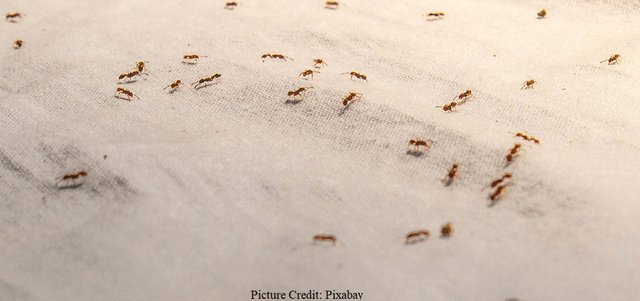
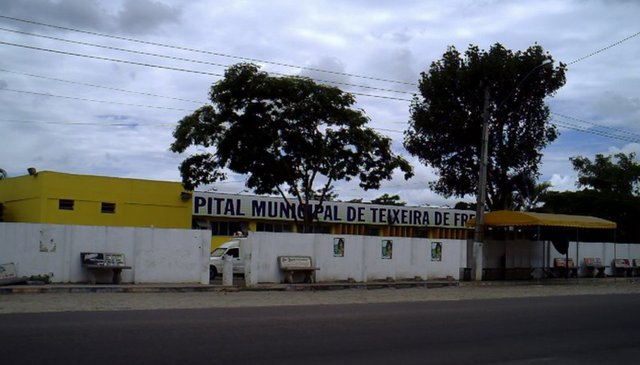
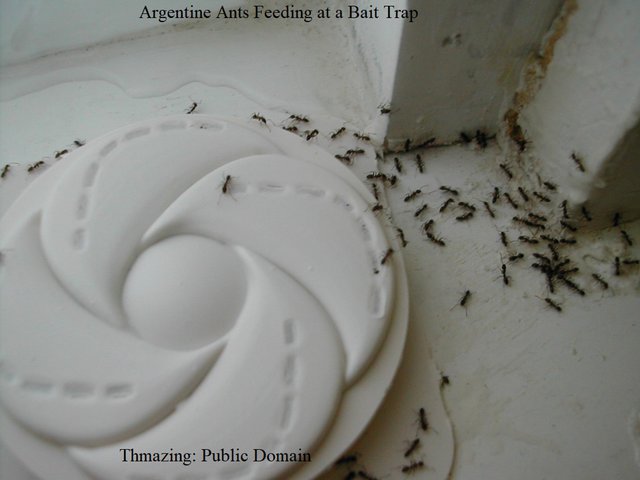
%203.0.JPG)
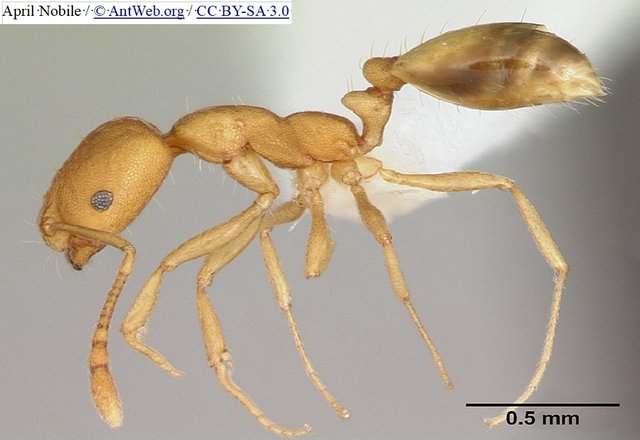

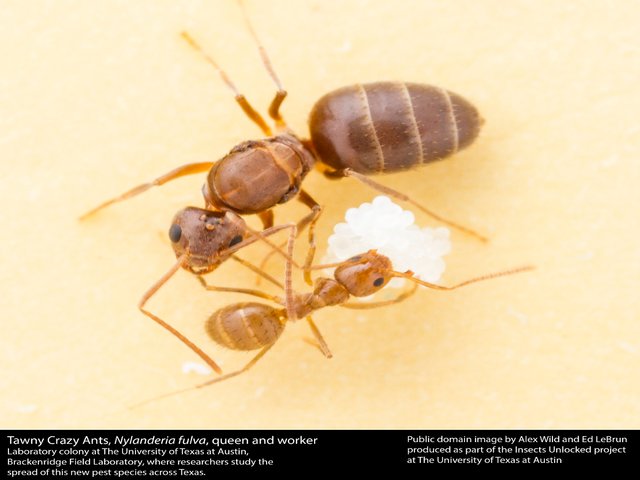
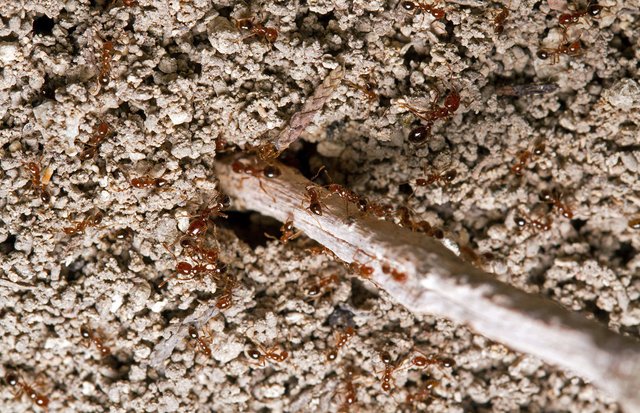
This post has been rated by the user-run curation platform CI! In this platform users are able to manually curate content. This is done regardless of Steem Power, for both rewards and vote size calculation.
Join in at our site here!
https://collectiveintelligence.red/
Or join us on discord to interact with the community!
https://discord.gg/sx6dYxt
This post was submitted for curation by: @brisby
This post was given a rating of: 0.9840757587136488
This post was voted: 61.64%
Thank you!
WOW! In your "well known intensive" kind of reserche and writing you wrote a complete article about ants in hospitals! So i am glad that Germany is not on your list - or did i missed that part? I would never have thought about ants being a danger for humans in any way... Amazing animals! Resteem!
Hi @kadna, I've started looking at ants again for a follow-up blog. One of my first searches this morning was in German (because you asked!!). This article popped up about ants in Dusseldorf. So much useful information remains...but the work is challenging, particularly if readers require that I do research in other languages 😁
Hope you are having a wonderful day.
Thank you so much! I don't require more research!!!! I think you have much to do.with your follow-up and as I know you it will be a deep search and another million-words post to write hihi ;-)
Posted using Partiko Android
😄
It probably will be...already searching in French and Italian--and I don't even know those languages :))
Hihi - go to Paris and get help from your brother ;-)
Is it all about yourself being interested or do you use it for business? I like to see you reward - it is pretty good, isn't it?
Posted using Partiko Android
I will never spend crypto. I am old--my financial future is behind me :) If I make money, it is for my children. If I don't make money, then I am enjoying myself as a writer and researcher. This is my one life. I hope to make the best of it. So I research, write and try to be effective as a human being. I mean, what else is there?
Meeting people like you, from parts of the world I will never visit again, is a miracle to me.
I'm editing this here: My brother is a successful business man...I am not so successful. However, his success was hard won. A story I wrote here tells something about his childhood.
Thank you for telling your story and telling about your brother (the story is excellent- I like your writing)
Posted using Partiko Android
I love to write stories, but science articles get more attention. Thank you for liking my story
Hello, @kadna. HaHa, I couldn't stop myself! I just kept going. I did look for Germany--I'm sure it's there, but I only looked in English. I will search in German, and if I find it, I'll get back to you. Thanks for the resteem and for plowing through this long, long article :))
Fantastic article Agmoore!
You realize that I'm going to be paranoid whenever I visit a hospital now thanks to you. 😉
I have to ask, what set you off down this
wormholeanthill?Well meaning visitors bringing in plants must drive hospital staff crazy! I never considered before that there may be happy little monsters hitching a ride on those gifts. 😨 (Which is sad because I ought to know better. Where there's dirt...)
Then to read that baiting may take several months to a year to work on Pharaoh ants depending on the severity of the infestation? Once these fellas move in there's no quick solution. 😓
Congratulations on your well deserved curie votes! Your article is a PSA that should be forwarded to every hospital and clinic. 👍
Ah, @brisby, I think I live in a wormhole :) Where did this idea start? Hard to tell. I think, once I came across that bit about ants and hospitals I was hooked. I have so much respect for the Brazilians, to take this on and set an example for others to follow. Great research there.
I'm afraid there's a Part II coming... so many questions I didn't answer (so many answers I don't know). But now, I turn to Finish the Story. It's a completely different kind of exercise and I'm looking forward to it.
Thanks for your kind words. I love squirrels. Nice to meet one on Steemit!🐾
I am going to have nightmares tonight @agmoore! 😐
Ants feasting on patients's wounds, invading ventilator tubes, transporting resistant pathogens. Wow! I was aware of HAIs, but it never occurred to me that they could be caused by ants. As it never occurred to me to put ants in the same box as flies and cockroaches - at least, when it comes to how unhygienic they are.
This is truly scary, as much as learning the incredibly high rate of HAIs reported in some Brazilian hospitals. My Gosh ... My brother will find your post very interesting and informative too. I will be forwarding it to him as soon as I finish here :) He is a physiotherapist who works in an ICU unit (with ventilators).
I am impressed by the extent of your research. You really went for it! The result? A unique, informative and engaging post 😊
Lots of love to you from rainy Portugal! :*
Thank you! Yes, me too, nightmares. Really rather disgusting, isn't it? And yet, we have to know. What seemed to come through from researchers was the importance of getting this information out. People, including me, traditionally regard ants more benignly than those other carriers of disease. It's a dangerous misconception.
You can tell I was very influenced by my research. Glad you can see the depth of it. I thought, if this is to be credible, it has to be properly grounded.
I didn't know what kind of response such unpleasant information would receive, but I pressed on anyway. So glad one of my favorite people appreciated my work.
Love from balmy New York....I hope the sun shines soon in Portugal. 🌄
Love the opening paragraph! It reads like something out of a real pro online newspaper. That's the quality we need here!
It's interesting how we usually see ants as innocuous, and only think of roaches and rats and mice etc. as pathogen-carriers.
I'm curious as to the HAI numbers in EU countries. Do they approximate Brazil's?
Thank you for that generous critique. This, as you might imagine, is an inexhaustible subject. And ants in hospitals I don't think have been given the kind of attention that Brazilians have dedicated. Hard to find good articles.
Found this chart that gives an idea of the rates in different countries (patients in ICU).
I'm not sure that answers the question entirely. I can see many blogs coming out of this. But I think for now I'll wander away from the critters and take a break with archeology and history.
Ants can get under the skin if I spend too much time with them :)
Hi @agmoore!
Your post was upvoted by Utopian.io in cooperation with @steemstem - supporting knowledge, innovation and technological advancement on the Steem Blockchain.
Contribute to Open Source with utopian.io
Learn how to contribute on our website and join the new open source economy.
Want to chat? Join the Utopian Community on Discord https://discord.gg/h52nFrV
Wow, Utopian, I am grateful. I love utopian.io. During the Hardfork disruptions, you guys were an invaluable resource. I do have you as witness, and I follow you on discord. Unfortunately, I don't code and my math skills are rudimentary, so I don't think I can be much help to you. Thanks very much for the endorsement.
This post has been voted on by the SteemSTEM curation team and voting trail in collaboration with @utopian-io and @curie.
If you appreciate the work we are doing then consider voting all three projects for witness by selecting stem.witness, utopian-io and curie!
For additional information please join us on the SteemSTEM discord and to get to know the rest of the community!
Thank you, SteemSTEM! When one of my blogs is endorsed by the SteemSTEM curation team---well, that's just a great feeling. I'm grateful.
Excellent comprehensive article! I learned things about ants I never imagined I'd want to know! You can write for @steemiteducation as well.
Thank you! I learned a lot about ants too :)
@steemiteducation--sounds like a good fit. Thanks for the suggestion. I don't think I ever recovered from being a teacher--or a student.
I appreciate your reading, commenting and upvoting.
Interesting post on ants @agmoore!
I've had so much stories and experiences about ants. At a particular time, they infilterated our house and got themselves into our freshly prepared pot of soup. Grandma had to dispose it in a bin bag along with its juicy meats. A particular time in high school, we had to evacuate an hostel because they were simply everywhere. Reading through your post and visiting those links, I see they've done more damage than I'm aware of.
However, looking on their bright side: Ants are wonderful and hardworking creatures. A sacred book do advice the lazy and poor to go learn from the ants. In my place here in Nigeria- a particular ant specie roaming in your house in large uncontrollable population signifies wealth to come- and it is often time true.
You remind me of my youth when you speak of ants bringing good luck--but in a different context. My mother's family was Sicilian and it was considered a great treat to eat a goat's head, brain and all. I actually partook of this once when I was a child. Now that I know the kinds of diseases that can be transmitted in brain tissue, I'm horrified, but that was my family's culture. So, I think of ants running through your house in the same way... I respect the culture and recognize that this tradition probably grew out of some practical experience in that culture, but ants in the house are not good, I'm sorry. I will stick to that :)
I appreciate your comments and they help to convince me to write part II and maybe even part III. There are so many questions I have, so much I couldn't obviously explore here. This is not an esoteric subject. It's one that has real significance.
But first, I have to learn more!!